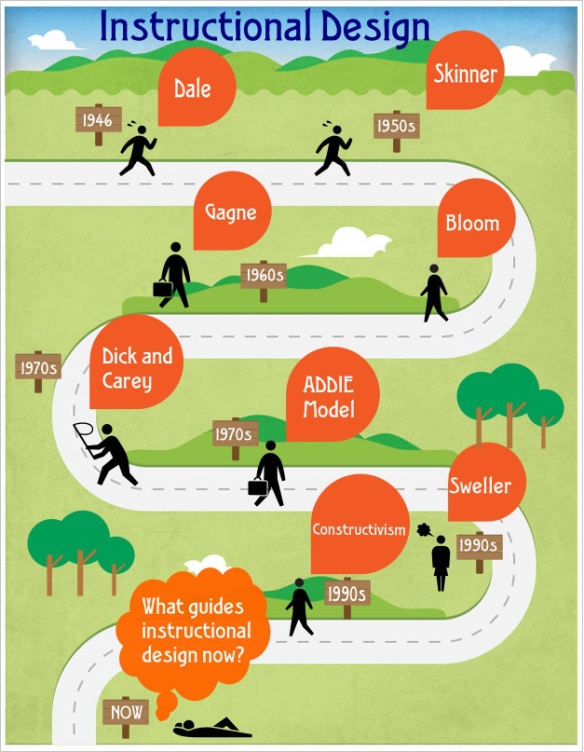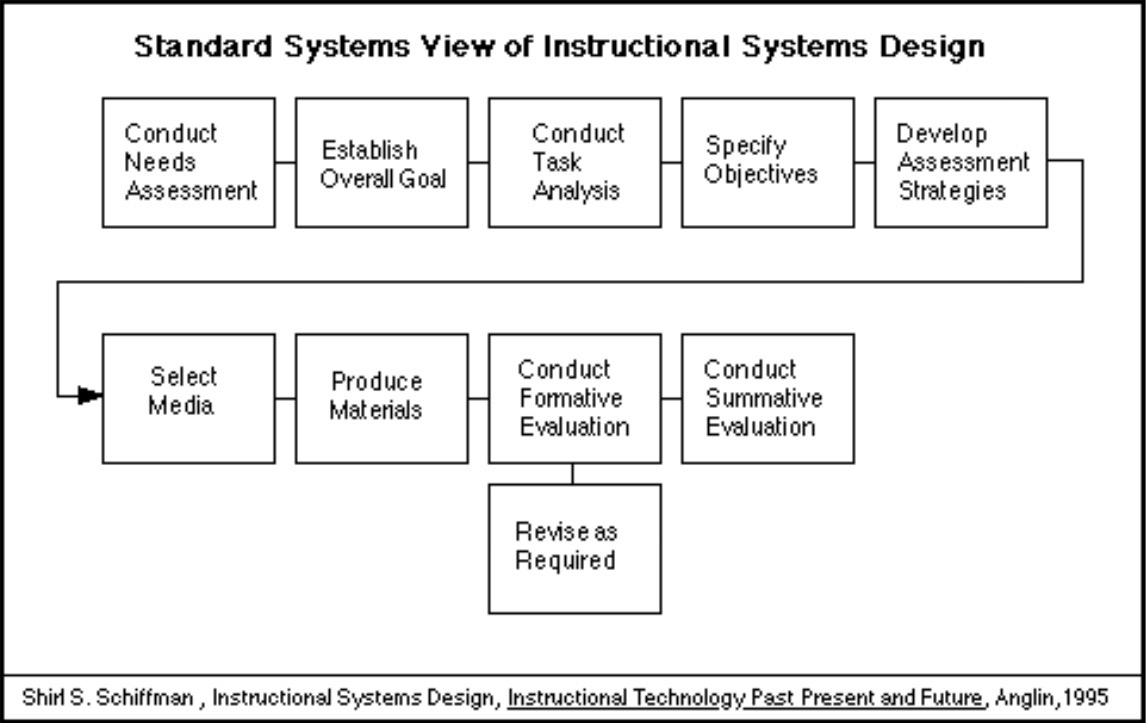Table Of Content

There are two widely recognized instructional design models in use today by both educational institutions and corporate training functions. The most traditional is the ADDIE model, of which there are several variations. The second is the agile model, whereby there are several variations, including rapid application development, rapid content development and the successive approximation model. Without the aid of a well-defined instructional design system, the process of producing effective learning content relies on randomly executed tasks and steps.
Introduction to Instructional Systems Design
Humans learn through stories, and each learning experience should be thought of as a longer, overarching story or narrative experience. This idea of the story is the narrative, and the intention behind the rhythm, flow, look, feel, and experience is the vision. These will serve as guideposts to ensure a pleasurable, meaningful experience. To define a vision, an instructional designer will engage in cycles of divergent and convergent ideation (see Figure 9). Interviews are important components of project charters and are also an excellent tool to use when working with SMEs on course designs. The purpose is the same, but at a more granular, course-specific level.
Fundamental 5: Iteratively Ideate, Curate, and Develop
For example, a law student learning how to apply a certain statute in an argument before a judge. If his/her classmates, as well as the professor, evaluate the strengths of his/her argument, they will learn to apply those principles to their own argument. In fact, the professor can point out which parts of the peer feedback are valid, which are not, and why. Everyone—not just the person being evaluated—will learn from the experience.
Designing Learning Activities and Instructional Systems
The purpose of quality instructional design is not just to design learning for students; it is also done to set instructors up for success in teaching. Exceptional instructional design enables the instructor to focus on facilitation, intervention, and feedback in online and blended settings, whatever the learning framework and instructional strategies used. Quality learner experiences often parallel quality teaching experiences. Again, in the spirit of rapid prototyping, the goal is to get feedback early and often; as such, designers should prototype as early as possible in the design process. To prototype an idea is to fully build out as much of the learning experience as possible to get a feel for the direction it is heading in, and to test it—for example, building out a module or a portion of an interactive.
Exclusive: All Houston ISD teachers to be paid based on test scores by 2025-26 school year, schools will continue to lose autonomy - Houston Public Media
Exclusive: All Houston ISD teachers to be paid based on test scores by 2025-26 school year, schools will continue to lose autonomy.
Posted: Tue, 18 Jul 2023 07:00:00 GMT [source]
Look at the students’ background to develop materials that challenge them without overwhelming them. Since students need many hours of practice in a skill to achieve expertise, an instructional program should teach material efficiently, encouraging students to practice every chance they get. Our instructional design conferences and workshops provide you with the education and peer-to-peer connections that empower you to be successful.
On the other hand, direct instruction is often employed in mathematics education, where it is well suited for well-structured problems, worked examples, modeling, feedback, and systematic scaffolding. This is not to say that medical education does not engage in direct instruction, and of course mathematics education can also engage in problem-based learning. However, there often is a “learning recipe” of frameworks that an instructional designer will choose to guide the vision and narrative of the course. Systematic design is defined as an orderly and iterative process for generating instructional solutions to performance problems based on a combination of practical experience, research and theory. The orientation characterized the systematic design process by identifying key tasks and interim products, benefits and limitations and its relationship to related fields of study.
Fundamental 6: Continually Learn and Improve Through Teaching, Reflection, and Learning Analytics
As in the internal Evaluation phase, revisions should and can be made throughout the entire process. With a projected growth rate of approximately 43 percent between 2021 and 2025, now is one of the best times to build a career in education. An intervention is something that intervenes to achieve a desired outcome that could not be achieved without this help. The intervention changes the normal trajectory or pattern of behavior or learning. There may be tools where you can create the course directly into the LMS. This means that after the final approval is done, you just need to set your course as open for your audience.

Instructional designers should draw upon their knowledge of frameworks and theories to support student outcomes given the content domain, goals, and contextual factors. There are many great learning strategies for designing exceptional experiences. While the four components highlighted above act as central pillars to all the previously discussed ID models, as an instructional systems designer, it is your job to personalize them to meet the unique needs of your own projects. For example, some professionals include an optional “Continuous Improvement” component following the Evaluation phase.
Instructional Systems Design (ISD)
Mike Miles wants to reshape Houston ISD. Will his policies work? - Houston Chronicle
Mike Miles wants to reshape Houston ISD. Will his policies work?.
Posted: Tue, 27 Jun 2023 07:00:00 GMT [source]
In an eLearning situation, it may be more difficult to connect students with one another—but it’s essential to expand one’s learning. Encourage online chat with one another, as well as meetups for those who live near another student. Conversations about the material taught and its practical applications often bear much fruit when it comes to internalizing facts and concepts. Not only that, but a course whose design includes such opportunities can forge connections that help students expand their professional networks to find more job opportunities and the chance to advance in their respective fields. Leverage your students’ life experiences to teach new skills and knowledge. If, for instance, your students are learning how to roll thin, see-through sheets of baklava and they have already learned to roll out plain pie pastry, build on that skill to teach the more difficult skill of rolling out baklava sheets.
Learning objectives are written and, in many cases, the assessment is created before any content or activities are added to the plan. In this way, students are more likely to successfully meet the goal of the course, as long as everything aligns with the objectives. The assignments were designed really well, giving us the sneak peek into what a instructional designer would do. Peer feedback not only helps those evaluated better internalize the material, but it helps the evaluators as well.
There will also be impacts on ideation and blueprinting from the process of prototyping (especially in ill-defined or ill-structured design scenarios). Designers must plan ahead and give themselves time to learn from the prototyping process. Stay up to date on the latest articles, webinars and resources for learning and development. Following several iterative changes to ADDIE, the final step, Evaluation, became a milestone repeated after every other step (e.g., Evaluate your Analysis, Evaluate your Design…etc.). The U.S. Navy also customized its own version of ADDIE, by introducing a Planning phase at the beginning of each ADDIE cycle, and appending an ongoing Maintenance (or content review, update, and upgrade) phase at the end.




















